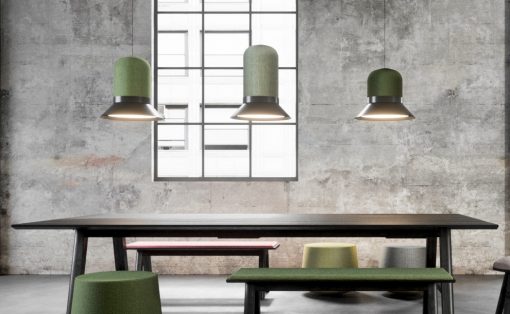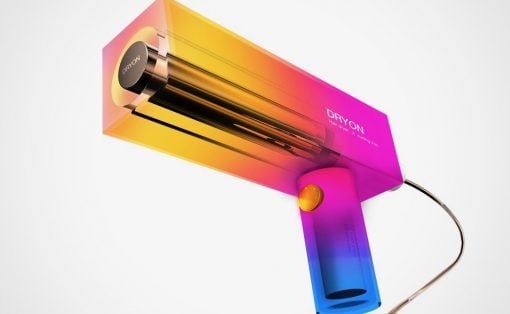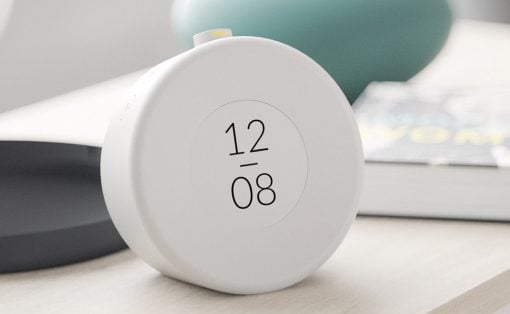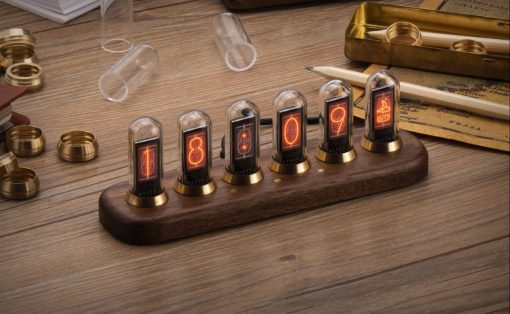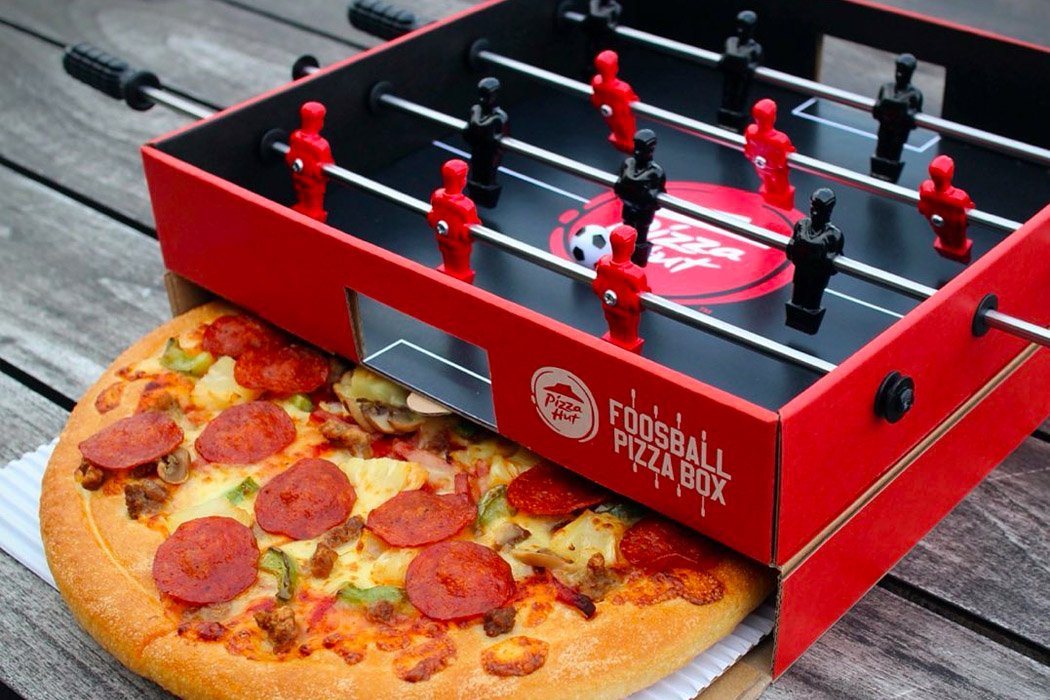
When it comes to food packaging designs, there are certain criteria that have to be met, especially in the case of takeaway boxes. A good takeout box must store the food carefully without anything spilling or leaking over, must keep it warm, and not to mention must be easy and ergonomic enough to carry or transport around. And in this eclectic mix of requirements, if you can manage to throw in an appealing aesthetic and good looks, you have a hit on your hands! Another criterion that is being focused on a lot these days is Sustainability! Sustainable and eco-friendly designs really seal the deal, as ignoring and paying no heed to the needs of the environment is no more an option. So we’ve curated a collection of myriad takeout boxes, ranging from easily portable and ergonomic ones to environment-friendly ones as well. Enjoy!

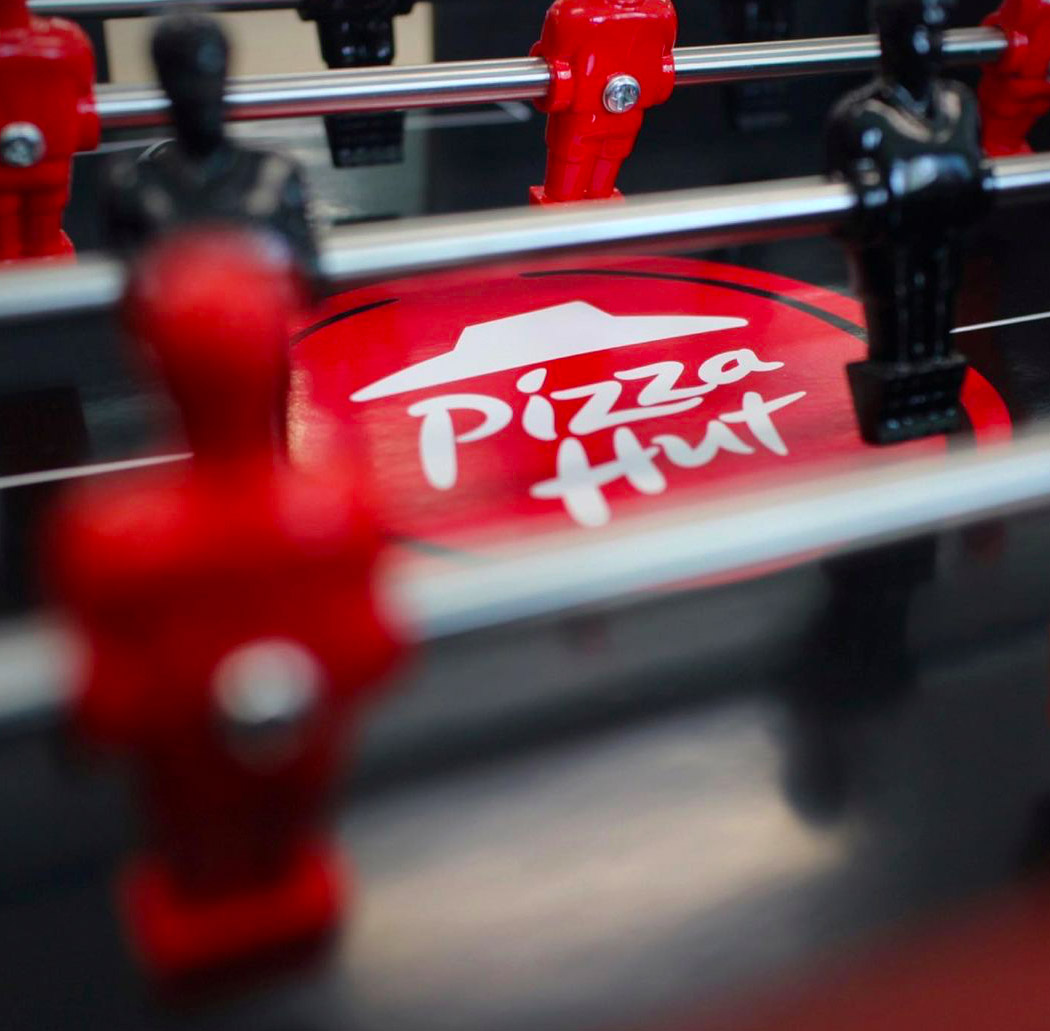
Pizza Hut + Ogilvy designed a limited edition pizza-box with a foosball table built into the lid! The Foosball Pizza Box was created as a warm-up for the Europa League which begins October 22nd (Get it, Warm-up? Pizza?). Wendy Leung, marketing director of Pizza Hut explains, ‘the Pizza Hut Foosball Pizza Box was a great opportunity to remind football fans that pizza goes best with their football. Launched at a time when everyone’s stuck in their houses, the box hopes to drum up enthusiasm, interest, and positivity. While diehard fans are just waiting to go out and support their teams or play their own games of street football, the Pizza Hut Foosball Pizza Box provides a great safe alternative, allowing you to battle it out with your friends in the comfort and safety of your own homes. Winner gets an extra slice, perhaps? And if there’s a tie, just equally divide the pie!
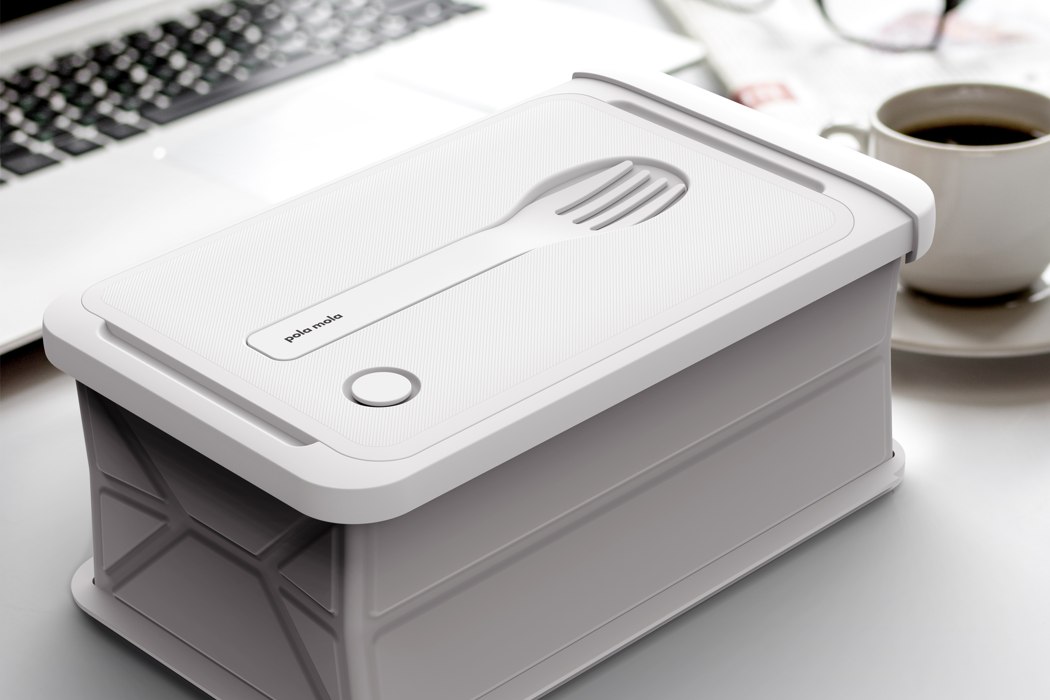

Molabox is like if the tiffin box had its own Macbook Air moment. It comes with a collapsible silicone construction and a svelte metallic outer case that, when collapsed, makes it look like you’re carrying an SSD around with you. However, when you want to store food in the Molabox, it expands to its true height, giving you enough storage for a good meal, along with cutlery, and even a partition too, in case you want to carry two separate items… but most importantly, the Molabox doesn’t contain any disposable parts or virgin plastics. The case is made from recycled aluminum, while the Molabox’s lid and reusable cutlery are entirely crafted from recycled plastic. It works perfectly as both a lunchbox and a takeaway box!
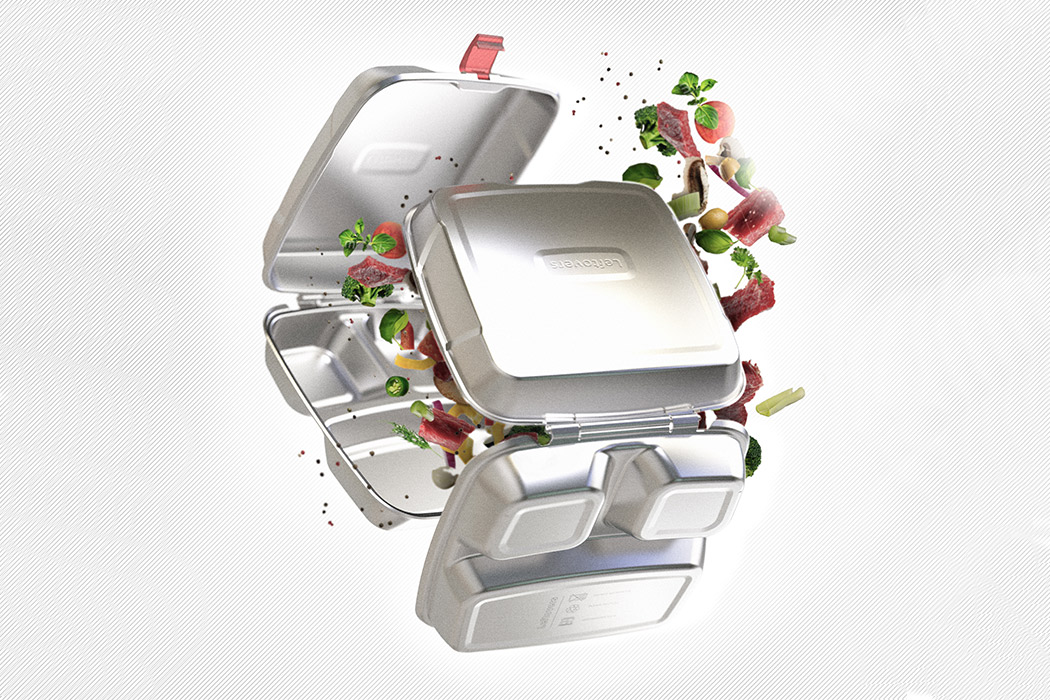
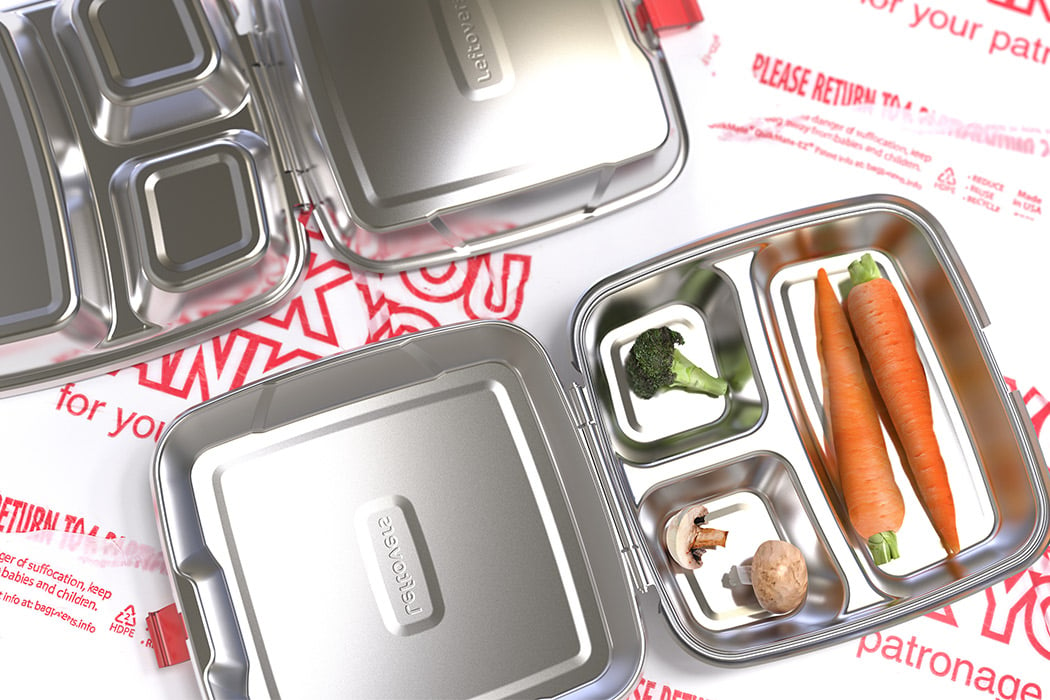
Styrofoam has a 24-hour lifespan but it is formed with materials that can last for 500 years, can you imagine the landfills at the rate we consume this product? “We need to stop and think about the environmental costs of our lifestyle,” says Dungan when talking about the notoriously single-use packaging that has been adopted worldwide. The box itself is so widely recognized that it has transcended continents and languages, so Dungan’s design aims to leverage its easy recall value while delivering a stronger message on sustainable living. The product is rightly called Leftovers and hopes to be a design that disrupts the normalization of polystyrene before it can become a mass-scale direct solution to the problem, the first step is to educate. For convenience and functionality, it is also dishwasher safe and recyclable. The redesigned box has a stainless steel body that enhances its functionality as a reusable food container while also bringing attention to how one small change can reduce the amount in our trash can.
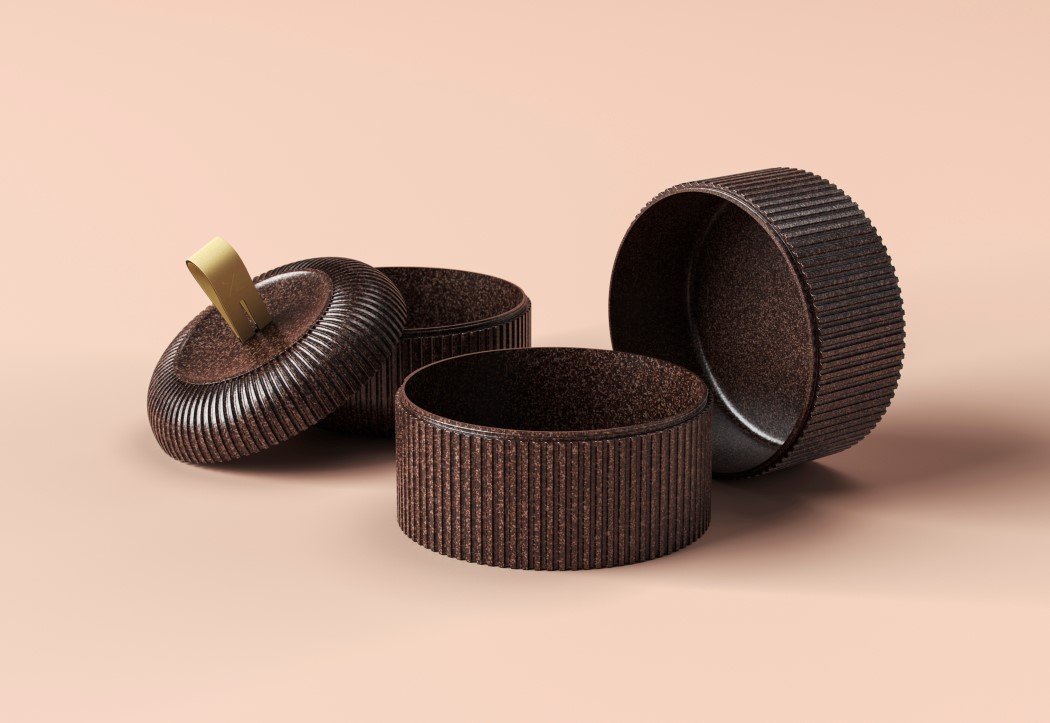
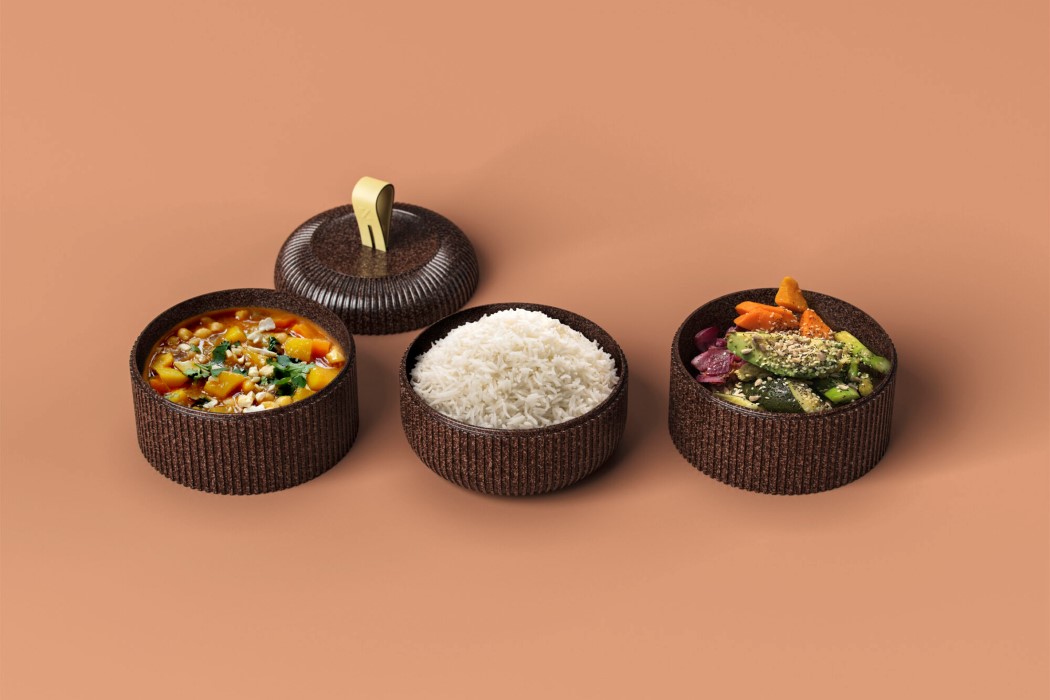
Created as a part of the Wallpaper* Re-Made project, these bio-composite containers are modeled to look like bento-boxes with a modular design that stacks up as your order increases, resulting in one larger box rather than multiple smaller boxes. This unique format provides a useful alternative to plastic containers (as it’s waterproof and leakproof too) and eventually reduces components by removing elements like lids (since the containers stack over and cover each other). Materials used to craft the packaging meet a range of criteria too, being heatproof, lightweight, recyclable, and insulating. The bio-composite polymer used to mold the containers themselves are made from cocoa-bean shells (a by-product of the cacao industry) by designer Paula Nerlich. The outer bag that carries the containers is made from all-natural materials too, including mycelium to insulate the interiors, a bioplastic known as Nuatan to provide a robust outer shell, a natural leather derived from pineapple leaves called Piñatex for the outer container’s lid, and Lexcell, a neoprene-free natural rubber used for the handles and straps on the bag and the Bento containers.
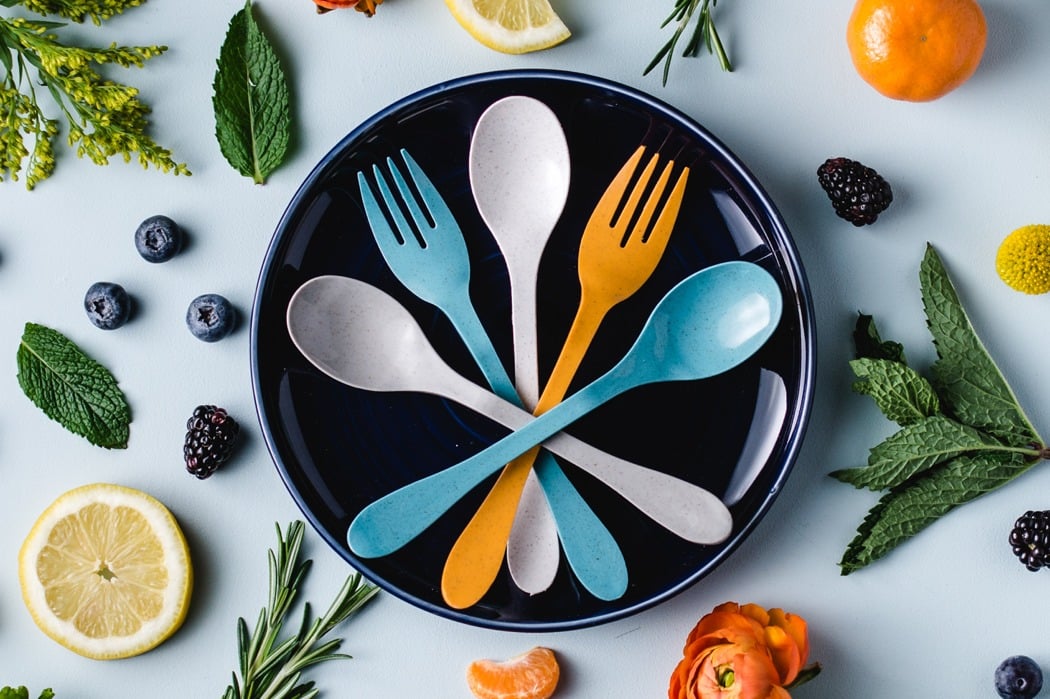

The Knork Eco has a pretty transparent objective. To A. remove non-biodegradable single-use plastics from our life-cycle, and to B. replace them with cutlery that’s eco-friendly, biodegradable, and more importantly, much more robust and comfortable to use than those horrible disposable forks and spoons. The Knorks are made from a specialized material called Astrik, which combines sugarcane starch along with bamboo fibers. The result is a moldable polymer that’s sturdy, looks and feels like glossy plastic, is food-safe, dishwasher safe, and can biodegrade in 2 years. The Knork Eco is a spoon+fork set made from Astrik. It looks and feels exactly like plastic, and can do everything plastic can. The Knork cutlery comes in its own chic case made from the bamboo-polymer too, allowing you to easily carry it around with you wherever you go because the Knorks are much more reliable and robust than most plastic spoons and forks. They come with a larger cross-section, making them thicker and stiffer, and even integrate a broader handle with a finger-rest, allowing you to use them with the dexterity of metal cutlery.
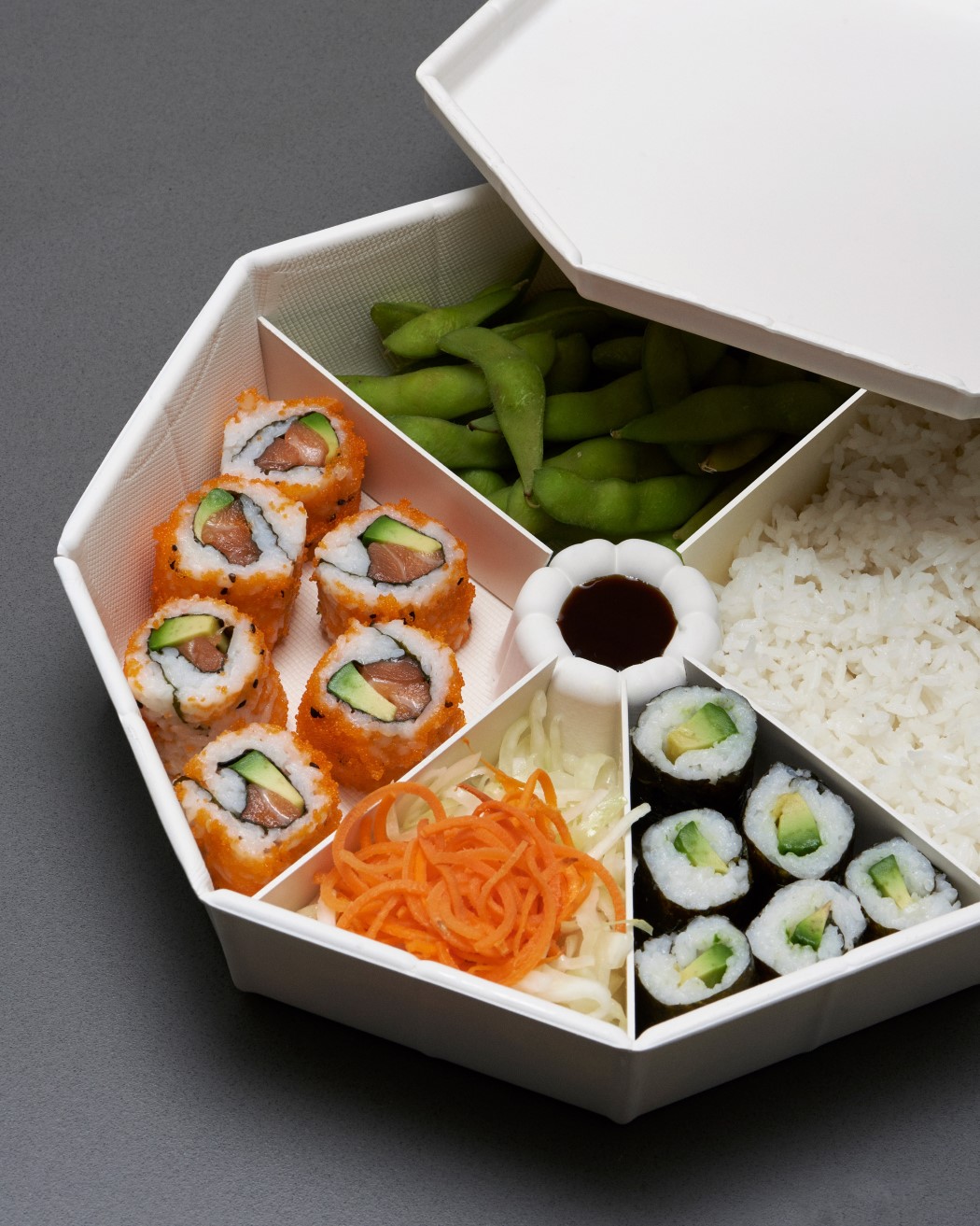
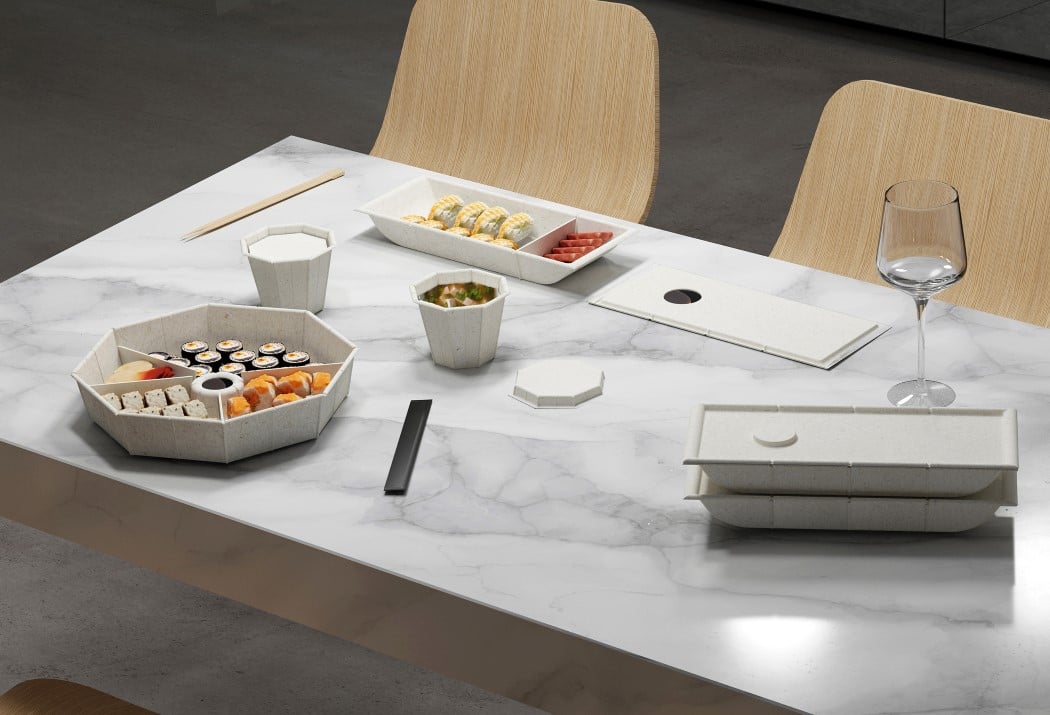
Meet the ‘One Size’, a template for parceling Asian food in a way that accommodates for tiny portions, solids, and liquids, and is above all biodegradable. Made from a molded cellulose material that can easily be composted (so you don’t need to separate the food and packaging while throwing it out), the One Size features a small single-person tray, a torus-shaped family-meal tray, and glass and lid for soups, curries, and gravies. The trays can be used to store individual food items, or portions of food using small cellulose walls as dividers, so you’ve got a bento-box-styled takeaway container that’s singular in nature. The single-person box can be slotted to create up to four separate compartments, while the family-meal box can be divided into eight segments, creating smaller containers within the larger container, without the carbon footprint. The boxes come with a glass and lid too. The glass holds any liquid-based dish, while the lid itself doubles up as a miniature dish for wasabi or soy sauce. Piasek’s design is made from molded cellulose, which primarily comprises recycled paper or natural fibers (think of your egg-carton), pressed into the shape of the packaging.
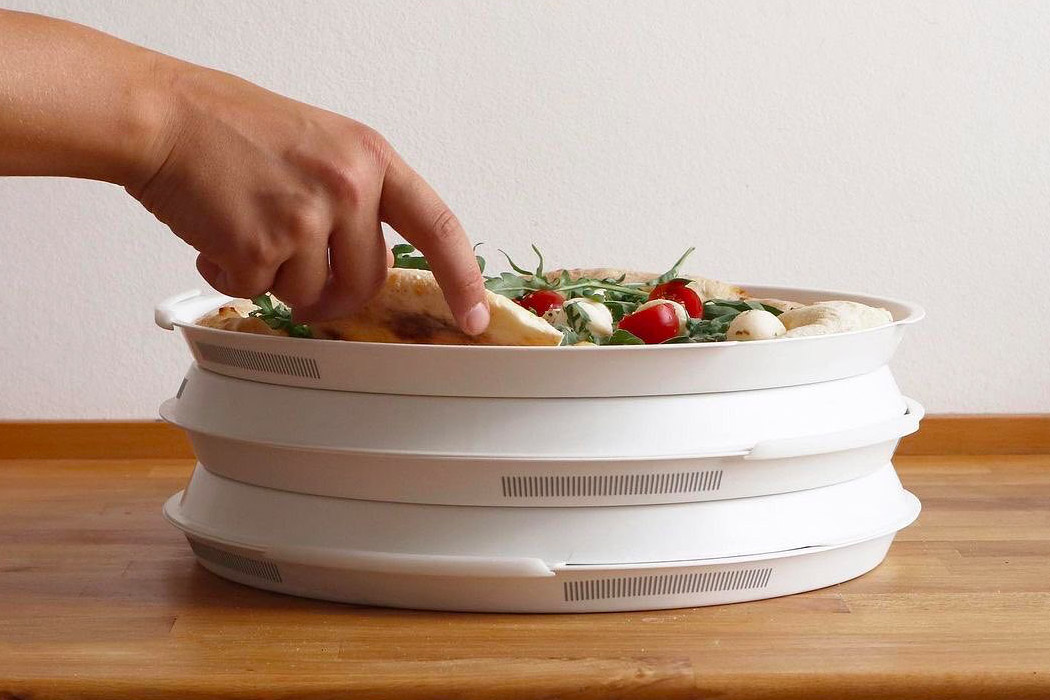

Finally, a round pizza box and it’s reusable + sustainable! Designed by Marlene Bruch and Luise Hombach, the PIZZycle is an eco-friendly pizza packaging concept aims to be an alternative to cardboard pizza boxes while taking a stand against the age-old debate of square vs round boxes. The common single-use boxes are left with food residue and therefore are deemed as non-recyclable waste – so if you really want to recycle that cardboard box you have to clean it. By being part of a deposit system, PIZZycle offers value to pizza restaurants, their customers as well as the environment. The packaging is composed of two identical, round shells, following the shape of a pizza. The box can be carried easily, cleaned in the dishwasher, and stored efficiently.

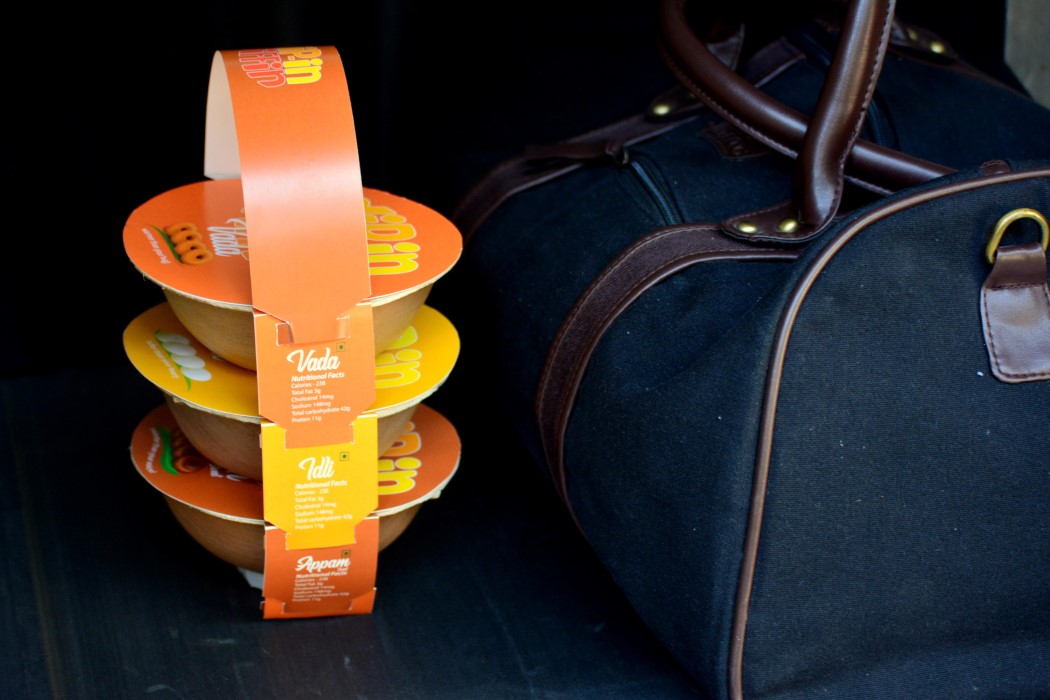
The Dip-In Tiffin was designed primarily for dry/semi-dry foods. Since the packaging isn’t air-tight, it tends to exclude foods that are gravy-based, limiting its options, but making it great for dry snacks like doughnuts, sandwiches, etc (the Indian context uses savory doughnuts and fermented rice-cakes). The tiffin’s main vessel is created using a dried, thermoformed Areca leaf, an eco-friendly alternative to conventional disposable plates. These vessels hold semi-dry, saucy, and oily foods really well too, offering a more reliable alternative to brown paper bags/boxes. The Areca bowls are covered with a simple branded paper sleeve, and slots along the sleeve allow multiple boxes to be suspended to each other vertically, resembling the tiffin. The solution was devised mainly for airports, which see patrons quickly grabbing meals and eating them within hours of checking in. It doesn’t use any glue, staples, or seals either, making it safe, and the all-natural makeup of the packaging means it can easily be disposed of after use!
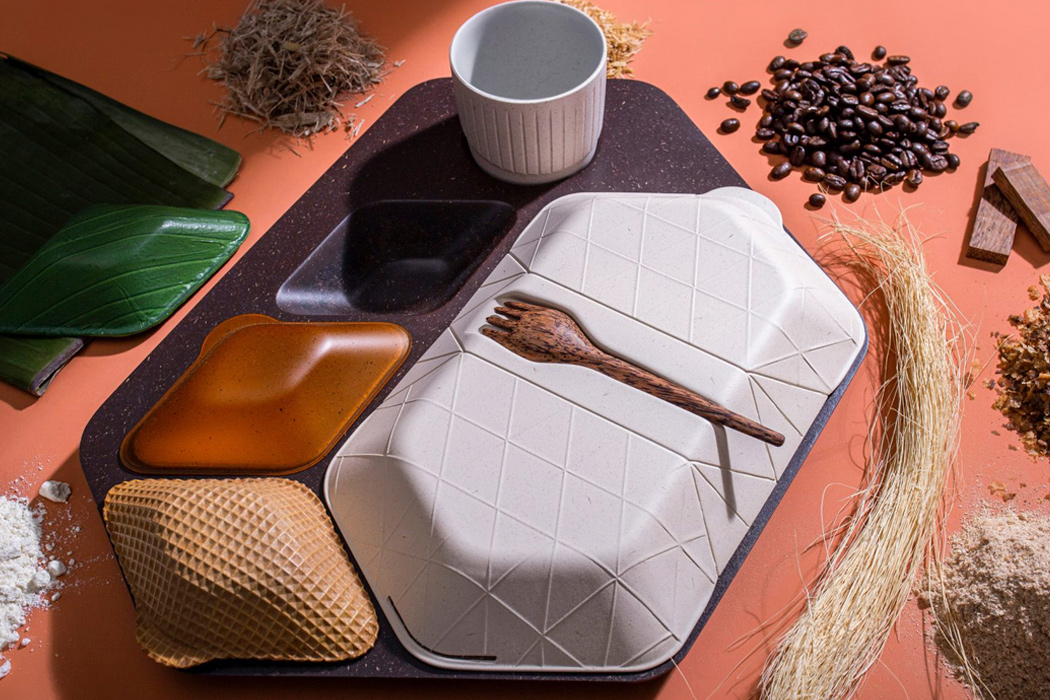

PriestmanGoode designed a line of eco-friendly and sustainable in-flights products as a part of their new exhibition at London’s Design Museum called ‘Get Onboard: Reduce. Reuse. Rethink’. Their green inflight meal service has completely transformed the conventional meal tray we are so used to receiving on a flight. “We’ve used a wide range of materials for our design concepts,” says Rowan. And they’ve kept their word. Each element is either partially edible, reusable, soluble, or biodegradable. They’ve ditched plastic meal trays for partially edible ones made from coffee grains and husks mixed with a lignin binder. The miscellaneous food containers that fit into the tray have been made from wheat bran. Banana leaf or algae have been combined with rice husk to create lids for side dishes like salad. Whereas a wafer has been used as a dessert lid, hence the materials symbolically reflect the food. Instead of having several pieces of single-use cutlery, the handy ‘spork’- a combination of a fork and spoon- made from coconut wood has been adopted. The usual plastic containers for milk or sauces have been abandoned in exchange for edible pods created from soluble seaweed. This design philosophy and concept can be used for takeaway boxes as well!
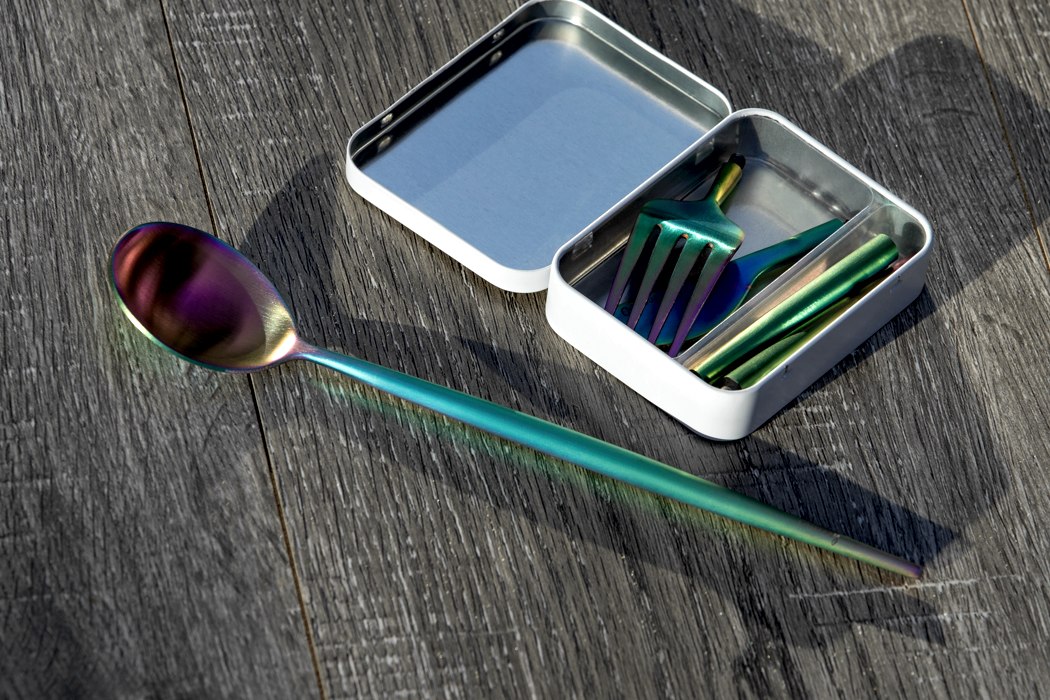
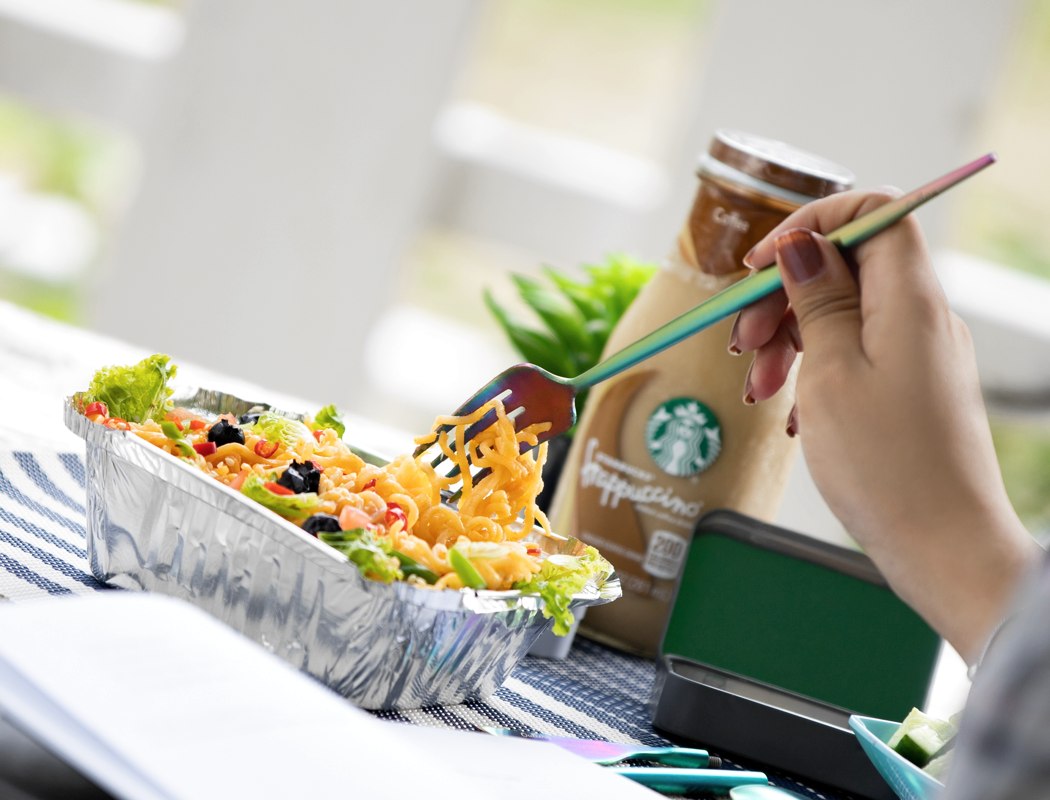
It’s that time of the season where you put your money where your mouth is. We have heard enough about plastic pollution and how we keep adding on to the trash. This applies mainly to the food industry where takeaways equal to the use of plastic cutlery. Wooden spoons, knives, forks, and sporks seemed to the better alternative, but nothing in comparison to sustainable and re-useable stainless steel flatware. However, the problem of plastic cutlery still persists and you as a consumer can be the change. Use the Pocket-Sized Reusable Cutlery & Chopsticks by Outlery. For those who don’t know them, Outlery is an Eco-Conscious company and have crafted this collapsible and portable set of cutlery and chopsticks, that fit into tin boxes. The three-part kit, screws on in a jiffy and can be used on the go. Easy to clean and maintain, you can carry the box with you, wherever you go.



